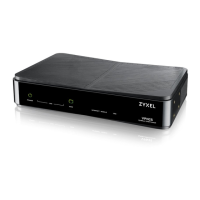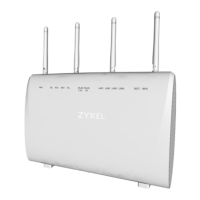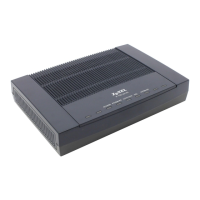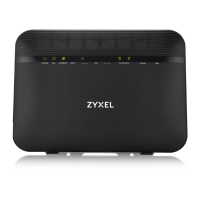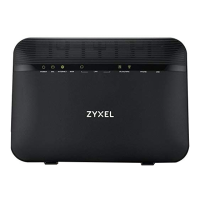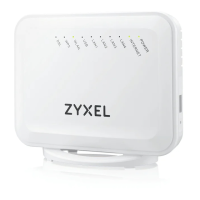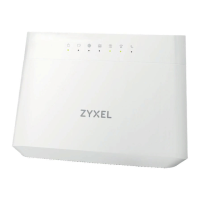Chapter 47 Product Specifications
VES1724-56 User’s Guide
385
VLAN A VLAN (Virtual Local Area Network) allows a physical network to be
partitioned into multiple logical networks. Devices on a logical network
belong to one group. A device can belong to more than one group. With
VLAN, a device cannot directly talk to or hear from devices that are not
in the same group(s); the traffic must first go through a router.
VLAN Stacking Use VLAN stacking to add an outer VLAN tag to the inner IEEE 802.1Q
tagged frames that enter the network. By tagging the tagged frames
(“double-tagged” frames), the service provider can manage up to
4,094 VLAN groups with each group containing up to 4,094 customer
VLANs. This allows a service provider to provide different service,
based on specific VLANs, for many different customers.
MAC Address Filter Filter traffic based on the source and/or destination MAC address and
VLAN group (ID).
DHCP (Dynamic Host
Configuration Protocol)
Relay
Use this feature to have the Switch forward DHCP requests to DHCP
servers on your network.
IGMP Snooping The Switch supports IGMP snooping, enabling group multicast traffic to
be only forwarded to ports that are members of that group; thus
allowing you to significantly reduce multicast traffic passing through
your Switch.
Differentiated Services
(DiffServ)
With DiffServ, the switch marks packets so that they receive specific
per-hop treatment at DiffServ-compliant network devices along the
route based on the application types and traffic flow.
Two Rate Three Color
Marker
Two Rate Three Color Marker (trTCM, defined in RFC 2698) is a type of
traffic policing that identifies packets by comparing them to two user-
defined rates: the Committed Information Rate (CIR) and the Peak
Information Rate (PIR).
Classifier and Policy You can create a policy to define actions to be performed on a traffic
flow grouped by a classifier according to specific criteria such as the IP
address, port number or protocol type, etc.
Queuing Queuing is used to help solve performance degradation when there is
network congestion. The following scheduling services are supported:
Strict Priority Queuing (SPQ) Weighted Round Robin (WRR), and
Weighted Fair Queuing (WFQ). This allows the Switch to maintain
separate queues for packets from each individual source or flow and
prevent a source from monopolizing the bandwidth.
Bandwidth Control Bandwidth control means defining a maximum allowable bandwidth for
incoming and/or out-going traffic flows on a port.
Broadcast Storm Control Broadcast storm control limits the number of broadcast, multicast and
destination lookup failure (DLF) packets the Switch receives per second
on the ports.
Port Mirroring Port mirroring allows you to copy traffic going from one or all ports to
another or all ports in order that you can examine the traffic from the
mirror port (the port you copy the traffic to) without interference.
Static Route Static routes allow the Switch to communicate with management
stations not reachable via the default gateway.
Multicast VLAN Registration
(MVR)
Multicast VLAN Registration (MVR) is designed for applications (such as
Media-on-Demand (MoD)) using multicast traffic across a network.
MVR allows one single multicast VLAN to be shared among different
subscriber VLANs on the network.
This improves bandwidth utilization by reducing multicast traffic in the
subscriber VLANs and simplifies multicast group management.
Table 182 Firmware Specifications
FEATURE DESCRIPTION
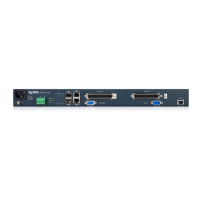
